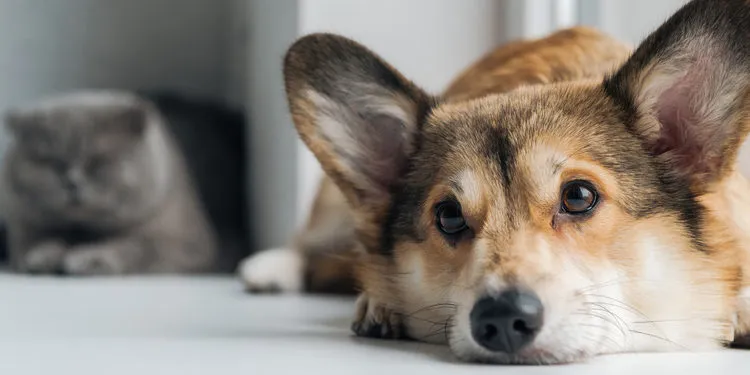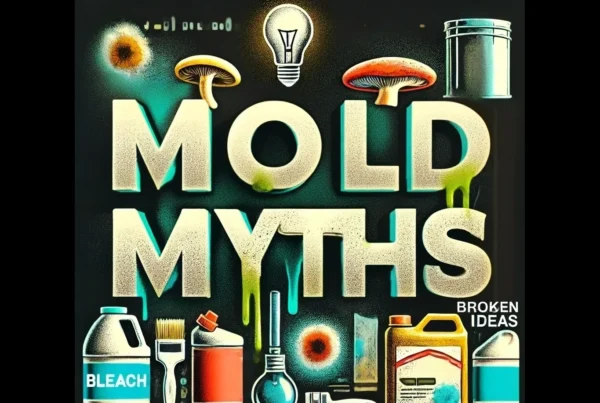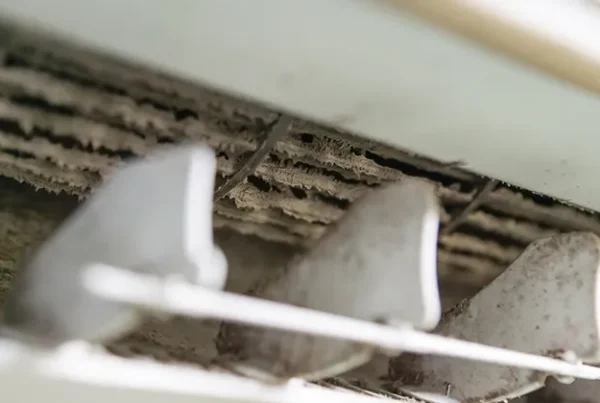Black mold, like all molds, is a health concern for everyone living in your home, including your pets. It may cause a variety of symptoms and health issues depending on the level and length of exposure. Pets are more likely to ingest moldy food than their human counterparts and tend to spend more of their time in areas that could be impacted by mold growth. The allergic effects of exposure to black mold can be experienced through inhalation (breathing) and direct contact while toxic effects are more often associated with ingestion. Pets can ingest small amounts of mold while they care for themselves through grooming which makes the impact of mold toxins more likely.
While there is usually visible evidence of mold growth in a home that has a problem, it can be tricky as it thrives in dark, warm and moist areas which can sometimes be hidden. It’s common that we aren’t aware of it until it begins to cause obvious problems. Unfortunately, your pet falling ill is actually a key indicator something toxic may be poisoning your daily environment which could include certain types of mold. As indicated above, Black mold can affect our pets sooner than it does us. Some smaller dog and cats, compared to other pets or breeds, are commonly at the highest risk because their size allows them to fit into or near areas where mold may be growing unseen. Higher levels of mold spores near hidden sources are inhaled at a much higher level than the humans in the home are exposed to. Also, once spores become embedded in their fur, later ingestion occurs while they are grooming themselves. Let’s look at the effects of black mold on dogs and cats.
How Black Mold Effects Cats and Dogs
Black mold may cause similar symptoms in dogs and cats as it does us. Some pets will be more affected than others, just like it is in humans. Symptoms generally fall under three categories and include respiratory distress, an allergic reaction, and toxic reactions. Some pets will be more affected than others, just like it is with humans.
Respiratory distress symptoms could include:
- Constant sneezing or coughing
- Runny nose (nasal discharge)
- Watery eyes
- Fatigue (excessive tiredness)
- Bleeding from the mouth or nose
Allergic Reactions could include
- Excessive scratching/itching
- Constant Sneezing or coughing
- Runny Nose
- Watery eyes
- Fur Loss (due to scratching)
- Sores or Rash
Toxic Reactions could include
- Gastrointestinal problems
- Decreased appetite
- Vomiting
- Shaking or Tremors
- Neurological problems which could include odd behavior or loss of function
Black mold exposure could be life-threatening to our cats and dogs, if not addressed quickly. One case study from 2007 describes a pair of cats that died of a pulmonary hemorrhage following exposure to black mold in their home. While this is unlikely to be a normal situation for most pet owners, it does reiterate the need to be aware of potential exposure to pets and correct underlying issues as quickly as possible.
If your four-legged family member is showing signs of illness, take them to your family vet or find a veterinarian near you. If the Veterinarian diagnoses your pet with black mold poisoning or exposure, the first thing to do is correct or remove underlying mold problems in your home and treat your pet. Exposure to other family members is likely happening as well, so addressing any potential concerns within the home should be made a top priority.
Keeping your family and pets safe is all about the preventative steps you take to keep your home as mold-free as possible. You will find peace of mind knowing you don’t have to go through this overwhelming experience cluelessly. Indiana Mold Remediation is here to help you keep your WHOLE family safe. With over 75 years of combined experience, there’s no need to panic because we will be one step ahead. Visit us online today to check out our guides and preventive tips to keep your home and business healthy.




